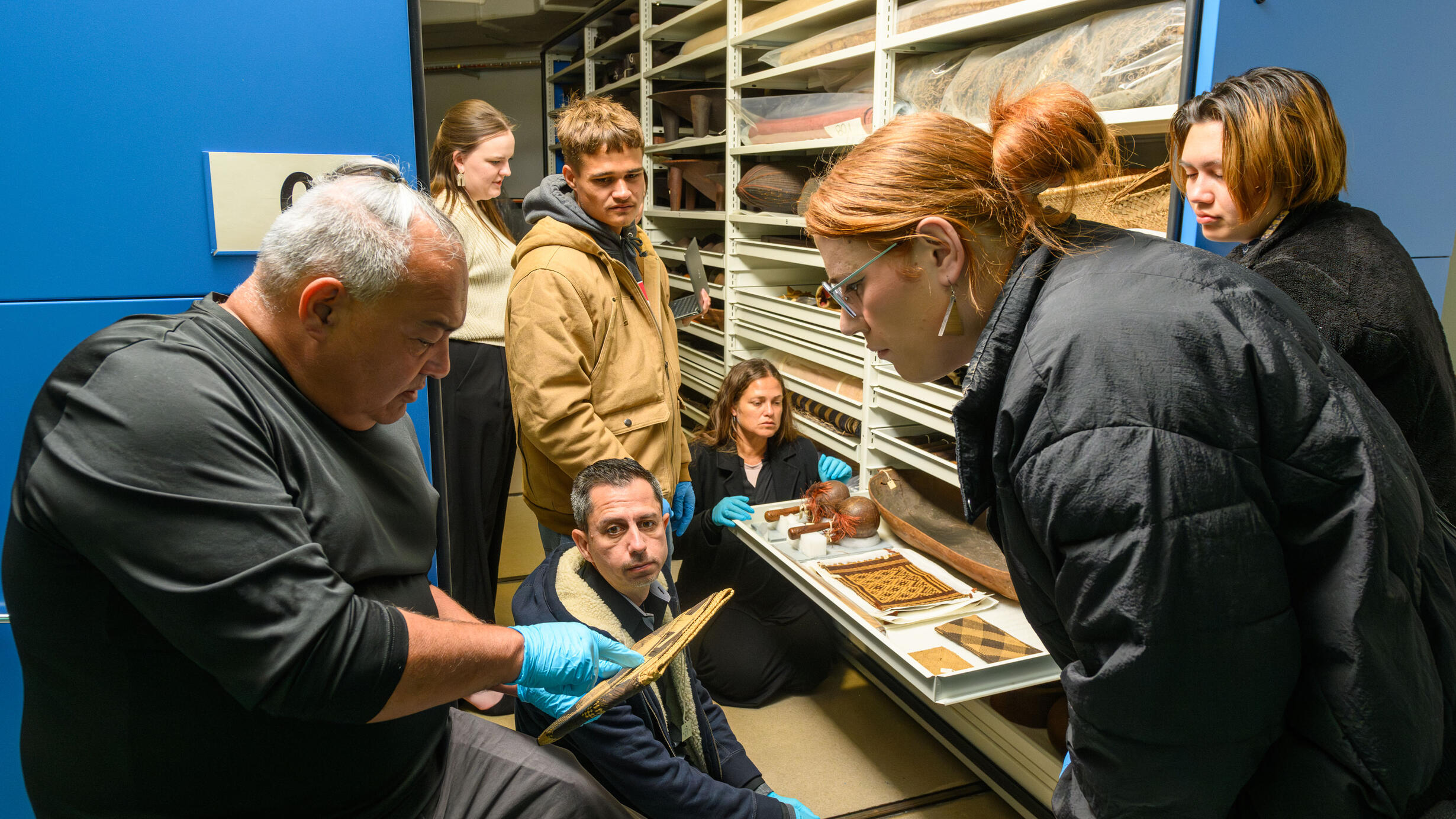Hawaiian Delegation Visit

A. Keding/©AMNH
In March 2024, the American Museum of Natural History’s Division of Anthropology welcomed a delegation of five Native Hawaiian and one Kamaʻāina representative to complete the repatriation of an akua hulu manu, also referred to as a “feather god.” The delegation members included: Kamakana Ferreira, Shane Akoni Nelsen, Sonja Kanani Enos, Talon Pōhaku Hundley, Emma Silva, and Aspen Omapang.
The akua was requested as a Sacred Object under NAGPRA by the Office of Hawaiian Affairs and Nā Hoa Aloha, a Native Hawaiian Organization that supports cultural projects at Puʻuhōnua o Hōnaunau National Historical Park. During their visit, the Hawaiian delegation was joined by representatives from the Lenape Center to welcome the group to Lenape land and participate in a kāhea and komo protocol. The two groups also met with Museum staff to take part in an aha ‘awa (Building a Relationship) ceremony, review additional ethnographic items in Anthropology’s Pacific Collection, consult on Hawaiian items on display, and solemnize a new storage space that will be dedicated to sensitive collections.
The akua hulu manu was found in the Museum’s ethnographic collection in 1907 and previously displayed in the Margaret Mead Hall of Pacific Peoples. Although little information about the feather god exists in the Museum’s archives, the representatives from Nā Hoa Aloha feel a strong connection between the akua hulu manu and an ancient mausoleum on the Island of Hawai’i called Hale o Keawe. This burial site was constructed to house the remains of generations of chiefs and moe pū (funerary attachments) belonging to Hawaiʻi’s ancient aliʻi (nobility).
Feather gods had specific functions in ancient Hawaiian governance, they were also carried in processions in the service of high chiefs during times of war to invoke the god Kūkaʻilimoku. Many of these items left Hawaiʻi’s shores following expeditions in the mid-1700s, well into the U.S. Military’s occupation during WWI and WWII. Today, only nineteen akua hulu manu are known to be in existence, found in the collections of institutions around the world.
Nā Hoa Aloha representative Talon Pōhaku Hundley blows a conch shell at the 77th Street entrance to the Museum as part of the kāhea and komo protocol.
A. Keding/©AMNH
Members of the Hawaiian delegation view items in the Museum’s Pacific ethnographic collection, including examples of basketry accessioned in 1900.
Following a review of Hawaiian items in Collections, the delegation members consulted on Hawaiian items in the Margaret Mead Hall of Pacific Peoples to determine if they are appropriate for public display.
A. Keding/©AMNH
Museum staff and members of the Hawaiian delegation take one last photo in the Mignone Hall of Gems and Minerals before saying goodbye. Left to right, back to front: Emma Silva, Kamakana Ferreira, Aspen Omapang, Nell Murphy, Sonja Kanani Enos, Barrett Stout, Kathryn Sabella, Heather Knapp, Shane Akoni Nelsen, and Talon Pōhaku Hundley.